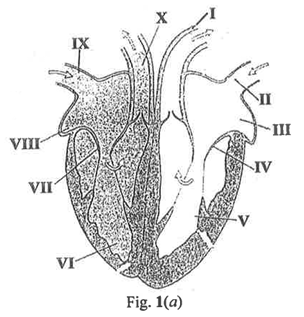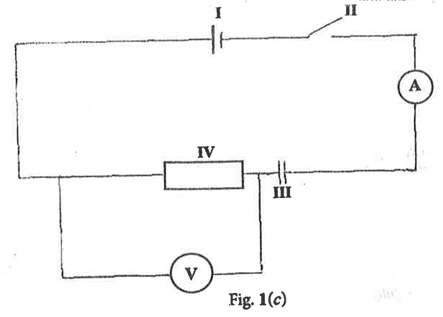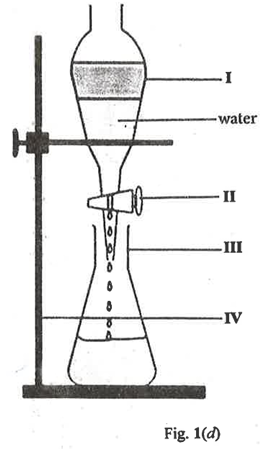ESSAY
This paper is in two parts: I and II. Answer Question 1 in part I and any other four question in part II
PART I
[40 marks]
Answer all of Question 1
-
Fig. 1(a) is an illustration of the longitudinal section of the mammalian heart.
Study it carefully and answer the questions that follow.

-
State one function for each of the parts labelled I, II, IX, and X.
-
Explain briefly why the left lower part of the heart has a thicker muscle.
-
State two ways by which the flow of blood to and from the mammalian heart as shown in Fig 1(a) can be kept at acceptable levels.
-
Name two parts of the heart where oxygenated blood can be found.
-
-
Fig. 1(b) is an illustration of three sets of plant parts labelled P(maize grains), Q(tomato seedlings) and R(cassava cutting).
Study it carefully and answer the questions that follow.

-
Describe briefly how each of the parts labelled P, Q, and R are planted on a seedbed.
-
State four conditions under which R can be cultivated to produce a high yield.
-
-
Fig. 1(c) is an electric circuit diagram
Study it carefully and answer the questions that follow.

-
State one function for each of the parts labelled I, II, III, and IV.
-
If the voltmeter reads 2.4 V and the ammeter reads 0.8 A when the circuit is closed, calculate the value of the part labelled IV.
-
State one way of conserving the value of the part labelled I in the circuit.
-
State two observations that can be made when the circuit is closed.
-
-
Fig. 1(d) illustrates an experiment performed to separate the components of a mixture.
Study it carefully and answer the questions that follow.

-
Describe briefly the process of this experiment.
-
State one function for each of the parts labelled II and IV.
-
State two precautions that should be taken to obtain reliable results when performing this experiment.
-